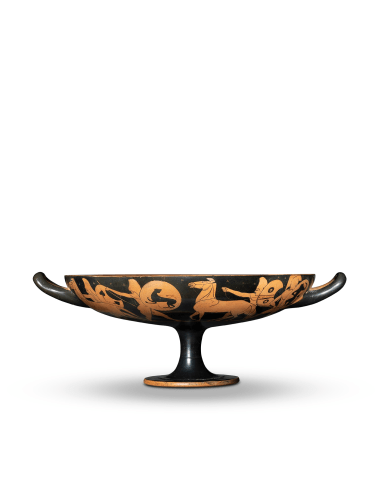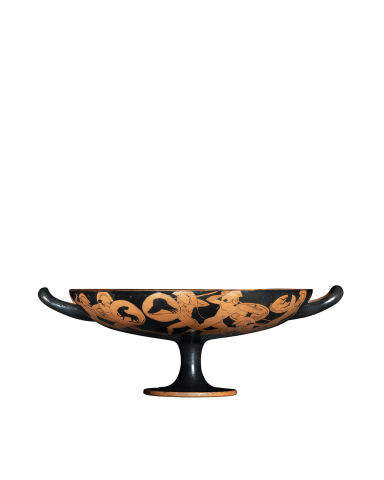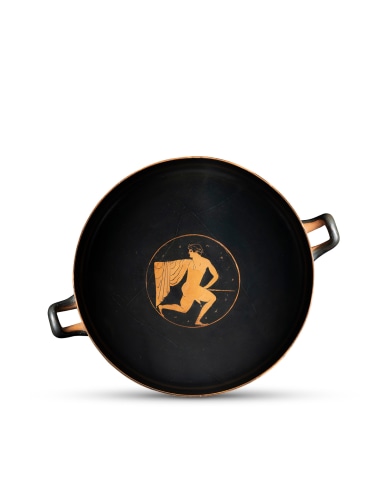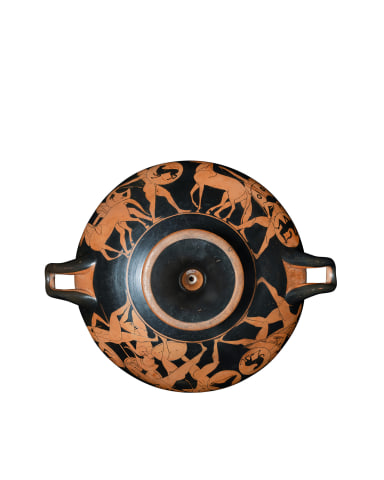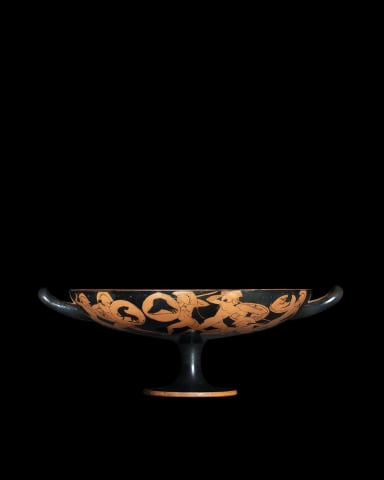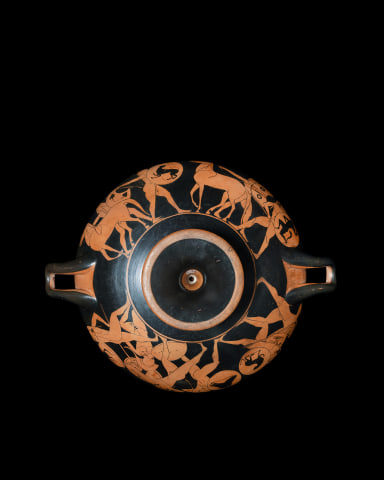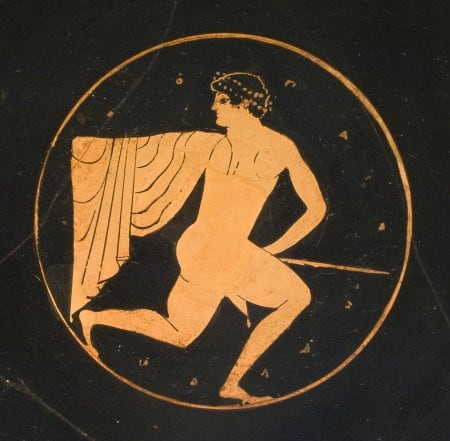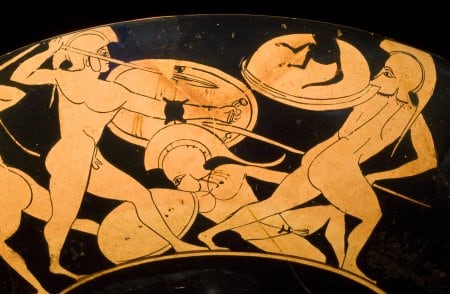Greek red-figure kylix (Type B), with youth in tondo, Athens, c.510-500 BC, attributed to the Bonn Painter
Terracotta
Height: 13.5cm, diameter: 31.8cm, width between the handles: 39.9cm
11484 C EL
Charles Ede, London
Further images
Kylix of graceful form (Type B) attributed to the Bonn Painter (Simon). The red-figure decoration shows a youth in the tondo, running to his left and looking back over his...
Kylix of graceful form (Type B) attributed to the Bonn Painter (Simon). The red-figure decoration shows a youth in the tondo, running to his left and looking back over his shoulder. Over his extended left arm falls a cloak whilst he carries a staff in his hidden right hand. In the text the youth in the tondo is identified as a komast; one of the youths taking part in drunken revels at the end of a symposium.
In the field, the inscription Ho pais kalos, meaning ‘the boy is beautiful’ is repeated on both sides of the exterior. On side (a) is a combat scene: six hoplites are shown, armed with spears and large round shields. All except one wear helmets of Corinthian type, the sixth wears the open-faced Chalcidian variant. The shield devices include a panther, a satyr's head, and the rear quarters of a horse. A fourth shield has a nonsense inscription. The warriors are set in two groups of three. The left group shows the central figure being attacked from both sides as he moves to his right. The other group shows two figures fighting over a third who has fallen, wounded, on to his hip. Side (b) shows horses being handled by three warriors all of whom wear Phrygian caps. One carries the normal hoplite shield, with a panther device, whilst the others carry two shields known as pelta, which have cutaway sections. At the right edge a fully-armed hoplite looks back towards the action on the other side. He carries a shield with a satyr device. The circular shields in which the devices face the viewer have a thin, incised band inset from the outer edge, and a small indentation from the compass that was used to create the perfectly circular groove. Recomposed from fragments but with very little restoration apart from a patch in the centre of the tondo affecting the middle of the body of the youth.
In the field, the inscription Ho pais kalos, meaning ‘the boy is beautiful’ is repeated on both sides of the exterior. On side (a) is a combat scene: six hoplites are shown, armed with spears and large round shields. All except one wear helmets of Corinthian type, the sixth wears the open-faced Chalcidian variant. The shield devices include a panther, a satyr's head, and the rear quarters of a horse. A fourth shield has a nonsense inscription. The warriors are set in two groups of three. The left group shows the central figure being attacked from both sides as he moves to his right. The other group shows two figures fighting over a third who has fallen, wounded, on to his hip. Side (b) shows horses being handled by three warriors all of whom wear Phrygian caps. One carries the normal hoplite shield, with a panther device, whilst the others carry two shields known as pelta, which have cutaway sections. At the right edge a fully-armed hoplite looks back towards the action on the other side. He carries a shield with a satyr device. The circular shields in which the devices face the viewer have a thin, incised band inset from the outer edge, and a small indentation from the compass that was used to create the perfectly circular groove. Recomposed from fragments but with very little restoration apart from a patch in the centre of the tondo affecting the middle of the body of the youth.
Provenance
Dr Peter Conradty, Nuremberg, GermanyPrivate collection, London, UK; acquired 2011
Literature
Compare E. Langlotz, Griechische Vasen in Wurzburg (Rome, 1968), pl.139/470Publications
W. Hornbostel, Aus der Glanzzeit Athens: Meisterwerke Griechische Vasenkunst in Privat besitz (Hamburg, 1986), no.40E. Simon, et al., Mythen und Menschen Griechische Vasenkunst aus einer deutschen Privatsammlung (Mainz, 1997), no.20
